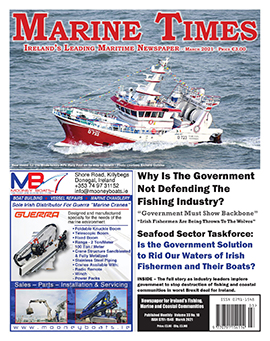Bull Island Blues
Blue Crab (Callinectes sapidus) discovered on Dollymount Strand, Dublin Bay
Declan Quigley reports
During early February 2021, a week of relentless bitter Siberian easterly gales kept the Irish Sea inshore fleet huddled up by the pier. When the storms finally abated, the swell continued to slosh the shoreline for a number of days before the fleet cautiously considered nudging out beyond the safety of their eastern-block-bunkers.
.jpg)
On the afternoon of the 15th February, Ruth McManus took advantage of a brief hiatus of the elements and ventured out for an invigorating stroll along Dollymount Strand (Bull Island, Dublin Bay) where large accumulations of flotsam, jetsam and dislodged marine biota had been violently thrown up during the previous week. Ruth observed large numbers of Hooded Crows opportunistically feasting on the massive windfall of dead and dying organisms, amongst which she noticed an unusual blue coloured crab that was dead but still fresh and remarkably intact. Ruth had never seen a crab like this before and immediately sent a photo of it to the National Biodiversity Centre in Waterford who confirmed that it was a Blue Crab (Callinectes sapidus), an alien and potentially invasive species not previously recorded from Irish waters. C. sapidus is easily recognised both by its distinctive colouration, the presence of exceptionally long projecting lateral spikes on either side of the carapace, and the paddle shaped last walking legs. Based on the colouration of the distal parts of the chelae (claws), blue in males and red in females, the Dollymount specimen was a female.
The Blue Crab is native to inshore and estuarine waters of the western Atlantic, usually inhabiting depths down to 35 m, but occasionally to 90 m. The species ranges from Nova Scotia (Canada) southwards to northern Argentina. The species is a commercially important in the western Atlantic where according to FAO statistics, a total of 90,771 tonnes was landed during 2018 (USA 69%; Mexico 22%; Venezuela, Nicaragua & Cuba 8%).
Blue Crab were first observed in European Atlantic waters during 1901 (Rochefort, SW France), and occasional specimens were subsequently recorded from the North Sea (1932), Mediterranean Sea (1949), Baltic Sea (1951), Sea of Azov (1967), SW Portugal (1979), Cantabrian Sea (2004), and NW Spain (2015). The species was first observed on the French side of the English Channel (Benerville-sur-Mer, Bay of Seine, Normandy) during 1973-74. Since then, there are been two isolated records from the eastern UK (1.6 km off Littlestone-on-Sea, Kent 1975 & Dunham Bridge, c.48 km upstream in the River Trent, Lincolnshire 1982). Isolated specimens have also been recorded from Japan, Malaysia, Australia and Hawaii.
The Blue Crab is now widely established throughout most of the Mediterranean and Black Sea, to the extent that it is currently being commercially harvested, particularly along the Spanish coast. Indeed, over the last few years, small quantities of live Blue Crab have been imported into Ireland from suppliers in this area.
The Blue Crab is a euryhaline and eurythermal species, able to tolerate a wide range of salinities (0-48) and water temperatures (3-35°C), but requires temperatures of 26oC in order to successfully reproduce. Although this temperature is likely to be a limiting factor to its potential establishment in Irish and other NW European waters, it is interesting to note that two ovigerous females were discovered in the Bay of Seine (Normandy) during 2017-18. Indeed, it is now thought that the species may be established in this area. Considering the increasing trend in sea water temperatures in the NE Atlantic, it is possible that this alien species might become established in more northern European latitudes during the future. In the meantime, there is always the danger that isolated focal populations might become established in the vicinity of coastal or estuarine warm-water thermal outfalls.
The Blue Crab has been reported as a highly aggressive species and is considered to be one of the “worst invasive” species in the Mediterranean Sea. Adult are omnivorous and cannibalistic, trophic competitors with native fauna (e.g. Green Crab Carcinus maenas), and can cause damage to cultured oysters and other bivalve species.
Although transport in ballast water or on ship hulls are generally considered to be the most probable initial dispersal vectors, especially in the case of larvae and juveniles, natural dispersion from previously introduced locations to other areas over long distances is also possible. Adult Blue Crab are excellent swimmers and can migrate several hundred kilometres, but passive dispersal of pelagic larvae or juveniles in water currents to colonize new areas is also plausible.
It is also possible that live adult-size specimens may have been purchased from retail fish shops by well-meaning but perhaps ill-informed groups or individuals and deliberately released. Indeed, considering the pristine state of the Dollymount Blue Crab, it is thought that latter scenario may have accounted for its recent stranding. It is possible that more specimens may already be lurking around in Dublin Bay.
Declan would be grateful for details on any further observations of Blue Crab in Irish waters (declanquigley2021@gmail.com; 087-6458485).


.jpg)
.jpg)
 Facebook
Facebook Twitter
Twitter